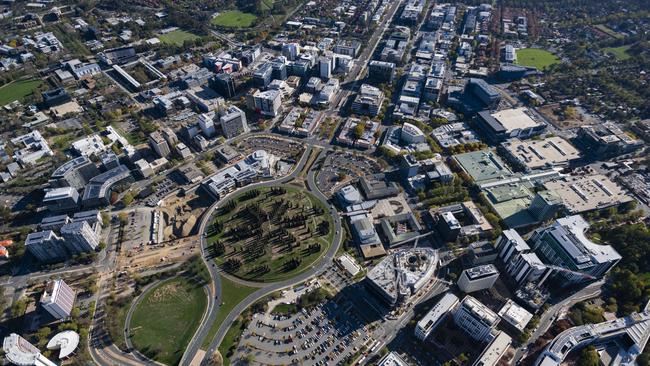ACT tax reform has ‘not gone according to plan’
The ACT government is set to collect $150m more in stamp duty than a decade ago, when it promised to abolish the hated tax in what at the time was hailed as a nation-leading reform.

The ACT government is set to collect $150m more in stamp duties in the most recent financial year than a decade earlier, when it promised to abolish the hated tax in what at the time was hailed as a nation-leading reform.
The planned reduction and eventual abolition of the duty on property conveyances was to be offset with increases in the broader-based, more efficient and fair land taxes and municipal rates.
Instead, budget papers show all taxes have climbed.
Halfway through this 20-year plan, Canberrans are paying 63 per cent more in property stamp duties than a decade earlier at a budgeted $390m in 2022-23, according to analysis by former senior ACT Treasury official Khalid Ahmed.
At the same time, the ruling Labor-Greens coalition has presided over a massive increase in municipal rates, which have more than tripled over the 10 years to an estimated $729m in 2022-23, even as land taxes have climbed up by two-thirds to $191m.
And while revenue from stamp duty is forecast to fall to $298m in 2026-27, this is still some $60m more than in 2011-12.

Dr Ahmed, who helped lead the territory’s tax review taskforce, told The Australian that “clearly, tax reform has not gone according to the original plan”.
“If that were the case, duty on conveyances would be less than a quarter of what the government is collecting now and tax on rental properties would have been abolished by now rather than more than doubling,” Dr Ahmed said.
Bob Breunig, the director of the ANU’s Tax and Transfer Policy Institute, said based on the evidence it was difficult to believe the ACT Treasury’s claims its stamp duty tax reform was “revenue neutral”.
Professor Breunig, who was involved in a committee tasked to assess the reforms early last decade, said that instead of abolishing stamp duty the government had made Canberran taxpayers in more expensive suburbs shoulder more of the burden.
“They could have simply lowered the rate of stamp duty by 5 per cent a year over 20 years to reduce it to zero. Turns out they just didn’t want to,” he said. “What they have done is made it much more progressive. So wealthy neighbourhoods are paying a lot of land tax and still paying a lot of stamp duty. Whereas in less expensive neighbourhoods, the stamp duties have come down dramatically, as has the land tax.”
Professor Breunig said he was not hopeful that stamp duty would be abolished by the early 2030s as planned. “We might have lost the appetite,” he said.
Economists and tax experts generally agree that duties on property conveyances are an inefficient and distortionary way for governments to raise revenue.
Stamp duty penalises a narrow subsection of property buyers and is a disincentive for people to move home in pursuit of better job opportunities, for example, or for retiring Australians wishing to downsize. It also makes the tax base more volatile, as revenue rises and falls with housing cycles.
Land taxes are considered fairer as they apply to all landowners – rather than just those property buyers – and is a steadier source of revenue.
Dr Ahmed pointed to three factors that had contributed to the ACT reform’s failure.
“First, tax reform of this scope requires fiscal discipline which has been demonstrably lacking,” he said. “Second, coherent policy settings are essential; counteracting policies – or policies that fight with each other – make reform impossible. As an example, cuts in land supply to increase land revenue and profits resulted in house price increases, in turn increasing stamp duty revenue. The government has not even been able to deal with ‘bracket creep’ through the reform period.
“Third, if circumstances change, as indeed they could over the long time frame of the reform, the original reform principles should not be abandoned.”
Dr Ahmed also warned the experience in the ACT could deter other jurisdictions from pursuing tax reform. “Hopefully, lessons can be learnt by treating this as a case study,” he said. “However, there are clear indications that it has been a disincentive for any major reform, or has led to relatively poorer reform design in some cases, for example, in NSW.”







To join the conversation, please log in. Don't have an account? Register
Join the conversation, you are commenting as Logout